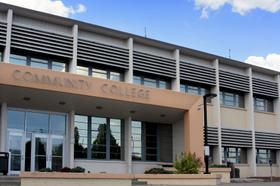As City College of San Francisco fights to remain open after the current school year, others are beginning to question the validity of an accrediting agency threatening the very existence of vital California community colleges. Scrutiny and even lawsuits leave the accrediting agency vulnerable while other California schools struggle to realize their accreditation may be the next on the line. How will this growing problem eventually be resolved?
More California Schools Heading to the Chopping Block?
The chancellor of the California Community College System, Bryce Harris, recently stated in the San Francisco Business Times that the possible de-accreditation of City College of San Francisco might be just the tip of the iceberg. Harris told the Business Times that as many as 20 California schools could face accreditation challenges in the future. While Harris did not name specific school names in his warning, he admitted that City College's problems could plague many other schools in the state.
In July, the Accrediting Commission for Community and Junior Colleges (ACCJC) announced it would pull City College’s accreditation at the end of the current academic year 2014. The commission cited several reasons for the decision, including a confusing governance structure and lack of financial accountability. Other factors that led to the action by the commission included support services, facilities, and teaching standards that were not compliant with the commission’s requirements in these areas.
As one solution to the problem, Harris has asked the state government for more






















